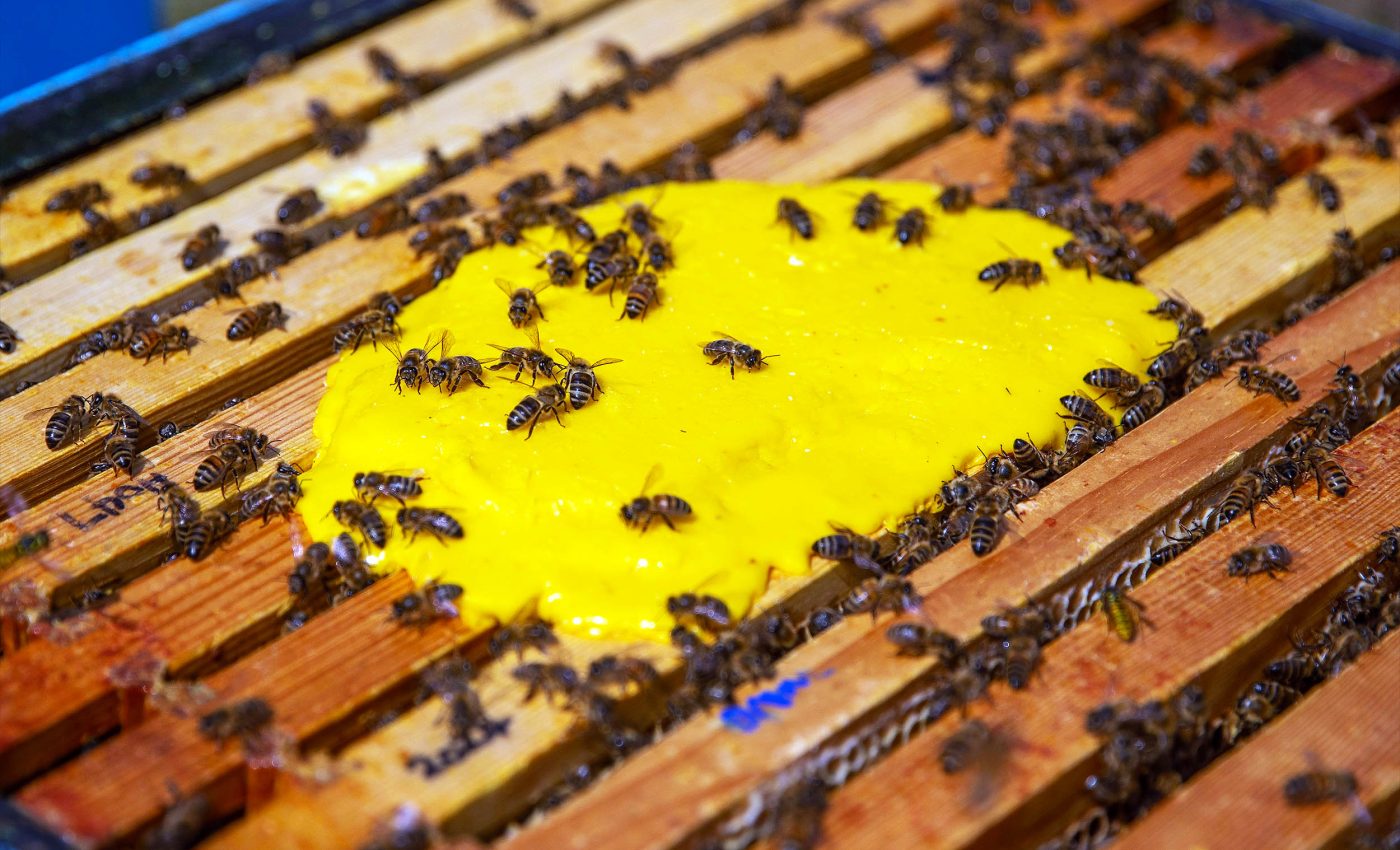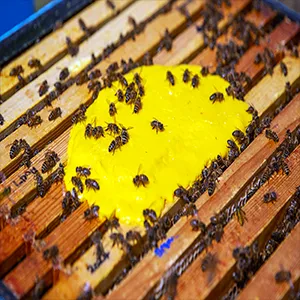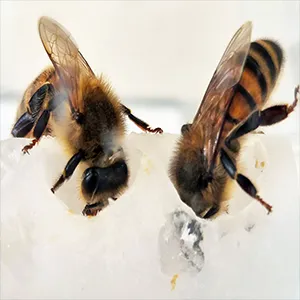
Save the honeybees, save the world - this new 'superfood' has a good chance to do both
Honeybees carry pollen from flower to flower, helping plants make fruits, seeds, and nuts. Most foods on our plates depend on their tireless, daily work.
Yet when farms plant huge blocks of a single crop and climate change throws off bloom times, bees can go hungry, and entire colonies disappear.
During these “pollen dearths,” beekeepers turn to substitutes. Those feeds keep adult bees alive, but they often fail to support brood – the next generation of bees.
A recent study explains why this happens and proposes a practical fix based on the right mix of nutrients.
Honeybees, superfood, and sterols
The missing piece in honeybee diets is a class of fats called sterols. Sterols help build cell membranes and provide ingredients for hormones that guide growth and development.
Humans can make cholesterol in our bodies; insects can’t. Honeybees are even more limited: unlike many other insects, honeybees can’t modify plant sterols into the forms they need.
Honeybees must eat the right sterols directly from pollen and pass them to their developing young. Without them, brood growth slows or stalls.
Researchers asked a basic question: which sterols do honey bee pupae actually use, and in what amounts?
One sterol dominated the profile – 24-methylenecholesterol – making up roughly two-thirds of the total.
Five others consistently showed up in smaller amounts: β-sitosterol, desmosterol, isofucosterol, campesterol, and cholesterol. That six-sterol recipe became the target for a complete feed.
One out of every three bites
After years of poor forage and shifting climates, pollinator nutrition has become a concrete business risk. Danielle Downey is the executive director of the honey bee nonprofit Project Apis m.
Though not involved in the study, Downey noted that honeybees pollinate about one in three bites of our food, but face many stressors.
Good nutrition, she said, is a practical way to strengthen colony resilience – especially as natural forage dwindles.
The new identification of key phytonutrients that, when added to feed, sustain brood rearing “has immense potential to improve colony survival – and the beekeeping businesses we rely on for food production.”
That perspective matches what commercial beekeepers report during long stretches between blooms: adult bees can hang on, but brood patterns break down.
Understanding the specific nutrients behind that pattern helps turn a vague problem into a solvable one.
Making sterols for honeybees
There’s a catch. The exact plant sterols honeybees need aren’t readily available in the right proportions, especially 24-methylenecholesterol. It’s rare and hard to source at scale.
To get around that, the team turned to biotechnology and chose a workhorse yeast, Yarrowia lipolytica, known for producing fats efficiently.
Using genetic engineering, including CRISPR, they rewired the yeast’s sterol pathway. They shut down its default sterol, ergosterol, and redirected metabolism to produce 24-methylenecholesterol along with the other five targets.
They then blended the engineered yeast – rich in the required sterols – into a complete honeybee diet instead of purifying each sterol.
Testing synthetic sterols on honeybees
The crucial test was straightforward: feed colonies different diets and watch what happens. Colonies that received complete nutrition without the proper sterols reared brood briefly and then declined.
Honeybee colonies that received feed containing the sterol-producing yeast continued rearing brood for significantly longer.
That outcome matters because maintaining brood through pollen-poor stretches helps prevent colonies from weakening or collapsing.
“Our study demonstrates how we can harness synthetic biology to solve real-world ecological challenges,” explained senior author Professor Geraldine Wright, of the Department of Biology at the University of Oxford.
“Most of the pollen sterols used by bees are not available naturally in quantities that could be harvested on a commercial scale, making it otherwise impossible to create a nutritionally complete feed that is a substitute for pollen.”
Honeybees need more than sterols
Better nutrition won’t fix everything, but it’s a big step in the right direction. Pesticide exposure, parasites like Varroa mites, and habitat loss still threaten colonies. Healthy landscapes with diverse flowers remain essential.
But nutrition is a major piece of colony health, and this work clarifies the issue: most feeds lack a realistic supply of 24-methylenecholesterol plus a small set of companion sterols, and a microbe-based approach can provide them.
Safety and practicality matter, too. The study demonstrates a proof of concept: make the needed sterols in yeast, mix them into feed, and support honeybee brood rearing.
Before broad use, the field will need checks on cost, stability, dosing, shelf life, and performance across seasons and climates. It also makes sense to confirm that the approach does not disrupt hive microbes or leave residues in honey.

Wider ecological implications
Managed honeybees sometimes compete with wild bees for limited flowers during dearths.
If beekeepers can rely on high-quality substitutes that truly support brood, managed colonies may put less pressure on wild pollinators when forage is scarce.
That easing of demand during critical gaps could help local ecosystems maintain balance.
The study also sharpens our understanding of bee biology. It confirms that honeybees need specific molecules, like sterols, found in certain pollens – generic protein or sugar won’t cut it.
This research also quantifies the sterol profile inside pupae and shows how that profile differs among workers, drones, and queens.
Finally, and thankfully, it demonstrates that metabolic engineering can tailor microbes to produce those molecules at useful levels.
This sterol-producing yeast “superfood” will never replace wildflowers in the honeybee diet, but it offers a clear nutritional tool for beekeepers when nature’s pantry runs low.
The full study was published in the journal Nature.
—–
Like what you read? Subscribe to our newsletter for engaging articles, exclusive content, and the latest updates.
Check us out on EarthSnap, a free app brought to you by Eric Ralls and Earth.com.
—–














